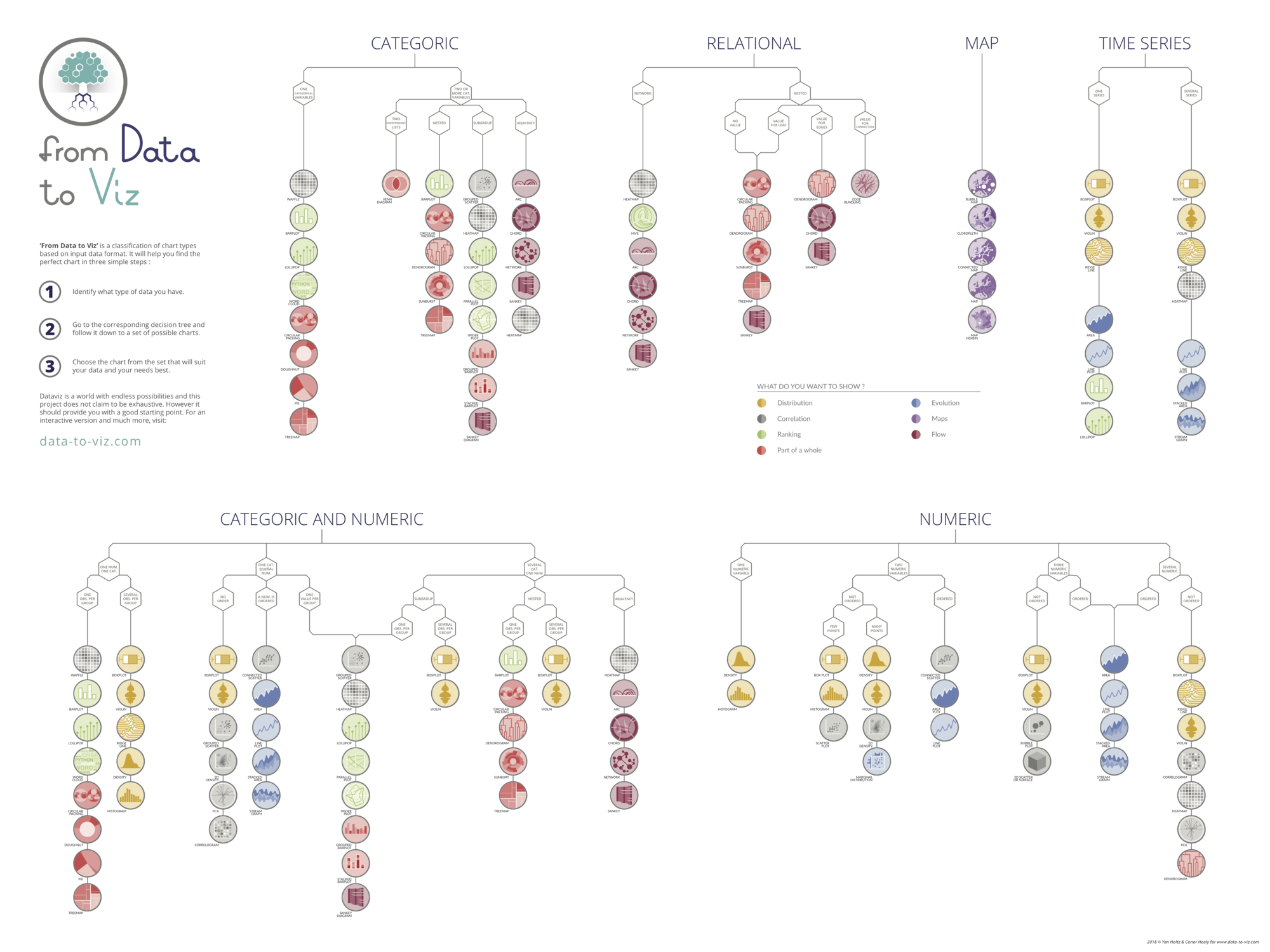⏱ Quick start
Plotly has 2 distinct ways of creating graphs: plotly express and plotly graph objects, which we'll discuss below. The simplest way to build an interactive graph is to use the express API.
Once you've installed plotly using the pip install plotly command, you can create your first interactive graph.
import plotly.express as px
# Sample data
x_values = [1, 2, 3, 4, 5]
y_values = [2, 3, 4, 5, 6]
# Create a line chart using Plotly Express
fig = px.line(x=x_values, y=y_values, title="Simple Line Chart")
# Show the plot
fig.show()Two distinct APIs
Important: In the gallery, we'll mainly be using the plolty.graph_objects API, as it's the one that allows the most customization. However, here we'll review the main differences between the 2 APIs available.
Plotly Express:
Plotly Express, a user-friendly high-level API, taps into Plotly's graphical capabilities to facilitate the swift creation of a diverse array of interactive visualizations. Its streamlined approach empowers users to generate a variety of chart types with minimal code. This abstraction shields users from intricate technical details, making it an ideal choice for those seeking an efficient visualization solution without compromising on sophistication.
In the following code, just 2 lines of code are needed to create an interactive bar chart, using the function px.bar().
import plotly.express as px
# Sample data
categories = ['A', 'B', 'C', 'D', 'E']
values = [15, 22, 18, 12, 28]
# Create a bar chart using Plotly Express
fig = px.bar(x=categories, y=values, title="Simple Bar Chart")
# Show the plot
fig.show()Plotly Graph Objects:
In contrast, the Plotly Graph Objects API presents a finer level of control and customization within the Plotly framework. It encompasses essential objects like Figure, layout, and data, serving as the bedrock for constructing visualizations. The Figure, which can be represented as a dictionary or instances of plotly.graph_objects.Figure, undergoes JSON serialization before being handed off to plotly.js.
In the following code, compared to the Express API, we need to initiate a figure object (with a slightly more complex syntax) using the function go.Figure and then change the layout of this figure using the function fig.update_layout().
import plotly.graph_objects as go
# Sample data
categories = ['A', 'B', 'C', 'D', 'E']
values = [15, 22, 18, 12, 28]
# Create a bar chart using the Graph Object API
fig = go.Figure(data=[go.Bar(x=categories, y=values)])
# Update layout
fig.update_layout(title="Simple Bar Chart", xaxis_title="Categories", yaxis_title="Values")
# Show the plot
fig.show()Importantly, the plotly.express module leverages plotly.graph_objects internally, enabling the creation of entire Figures in one go. This seamless integration underscores Plotly's versatility, bridging the gap between simplified creation and intricate customization for diverse visualization needs.
Customizing titles with Plotly
Customizing titles in Plotly graph objects is a straightforward way to enhance the visual appeal and clarity of your data visualizations. With Plotly, you have the flexibility to modify various aspects of the title, such as its text, font, color, alignment, and positioning. Here's a brief guide on how to customize titles using Plotly graph objects:
%%capture
# Add and change title style
fig.update_layout(
title='Custom Title',
title_font=dict(size=24,
color='blue',
family='Arial'),
title_x=0.5, # Title positioned at the center horizontally
title_y=0.9, # Title positioned near the top vertically
)Annotation
Annotation is a key part of a great visualization. It transforms a simple chart in a whole piece of story telling. Before you share your graph with anyone, make sure the key insight are highlighted with labels, shapes or color.
With plotly, we will mainly need to use the add_annotation() function.
%%capture
# Add annotation to a specific point
fig.add_annotation(
x=2, y=11, # postion
text="Annotated Point", # text
showarrow=True,
arrowhead=2,
arrowsize=1,
arrowwidth=2,
arrowcolor="red"
)⏱ Saving a plotly chart
Once you've created a plotly chart you probably want to save it as a standalone html file in order to share it or embed it in another webpage.
This is the code allowing to save a plotly chart. You can read the full process here for instance.
fig.write_html("the/path/to/chart-name.html")⏱ Embeding a plotly chart
Once the chart has been saved, you can embed it in a html document using:
<iframe
src="the/path/to/chart-name.html"
width="800"
height="600"
title="chart name"
style="border:none">
</iframe>Plotly graph gallery
Here is a glimpse of the plotly charts showcased in the gallery:








